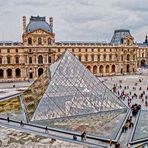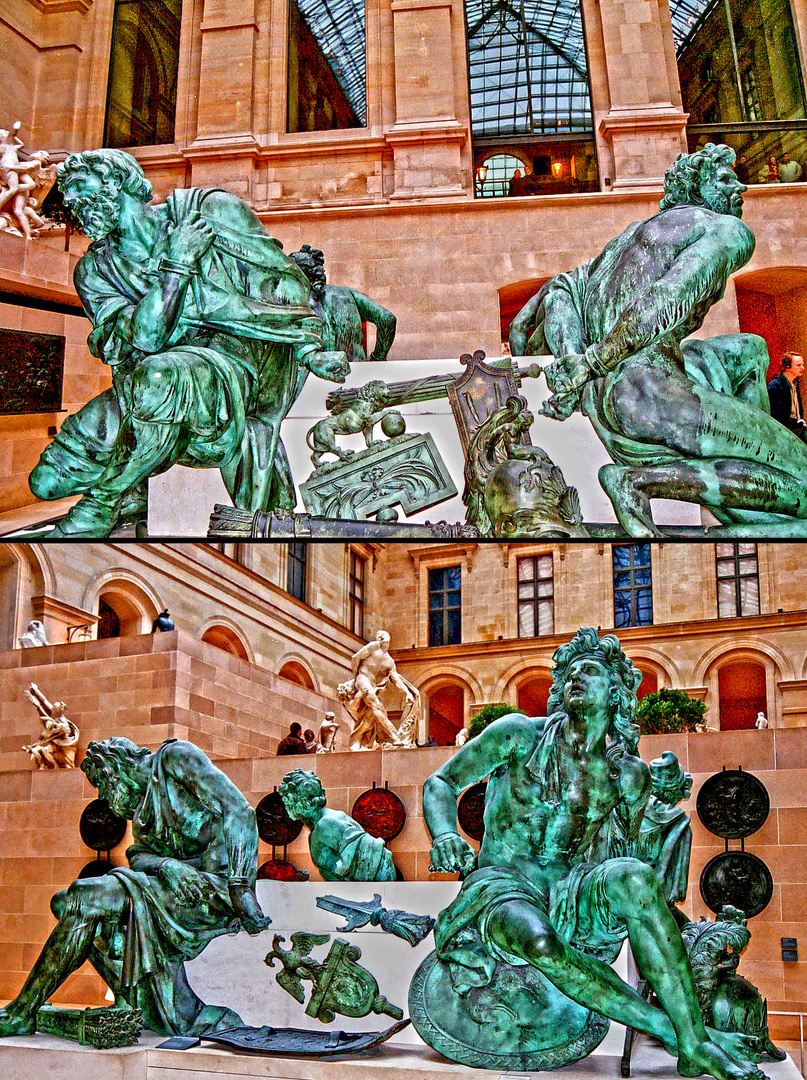Four Captives Sculpture, 1686, Musée du Louvre, Paris
Four Captives Sculpture, 1686, Musée du Louvre, Paris
Also known as Four Defeated Nations: Spain, the Holy Roman Empire, Brandenburg, and Holland
Taken from the pedestal of the statue in the Place des Victoires, these captives represent the nations defeated by the Treaty of Nijmegen (1679). Each expresses a different reaction to captivity: revolt, hope, resignation, or grief. They were first kept in the Invalides (1804-1939) then allocated to the Louvre in 1960 and placed in the grounds of the Château de Sceaux from 1961 to 1992.
The Captives surrounded the pedestal of the statue of Louis XIV on foot in the Place des Victoires. They are by Martin Desjardins, the gallicized name of an eminent Dutch sculptor active during the reign of Louis XIV, who had already made his name with the decoration of the Hôtel Salé (now the Musée Picasso). The monument was commissioned in 1679 by François d'Aubusson, duke of La Feuillade and marshal of France, who had distinguished himself in the campaigns in Franche-Comté and Sicily. He was an astute courtier, and thought it opportune to raise a grandiose monument to the glory of his king. As a setting for the statue, he persuaded the city to open up an immense square and he had the architect Jules Hardouin-Mansart design it. The square was named Place des Victoires in homage to France's victories in the Dutch War, which ended in 1679 with the Treaty of Nijmegen. The monument was inaugurated in 1686.
Four defeated nations:
The captives, four larger-than-life bronze figures, symbolize the four nations defeated at the time of the Treaty of Nijmegen. Each represents one of the ages of man and a different attitude to captivity. Spain is a smooth-faced young man with streaming hair. His naked, upright body and heavenward gaze all indicate hope. The Holy Roman Empire is a bearded old man dressed in an ancient tunic. His head is bowed and his body sags in dejected resignation. Holland is young man with virile features and a short beard. His naked body poised to leap, his shoulder thrust forward in a defiant gesture and his wild expression speak of rebellion. Brandenburg is a mature man dressed like an ancient barbarian (like the Farnese Prisoners, classical marbles highly appreciated by many artists). The hand clutching his cloak, the drooping right shoulder and contorted face express grief. The Captives are all turned to the right, which encourages viewers to walk around the monument in a clockwise direction. Desjardins brilliantly varied his figures, alternating old and young, nude and clothed, upright and stooping figures, and arranging their arms and legs in different positions.
Enslavement and Captivity are compared and contrasted in these two studies from the Louvre:

The Rebellious Slave (Left) & The Dying Slave (Right), Michelangelo, 1513
Amit Banerjee
http://www.louvre.fr/en/oeuvre-notices/four-captives-also-known-four-defeated-nations-spain-holy-roman-empire-brandenburg-an

The Louvre Palace & the Louvre Pyramid
Amit Banerjee










Commenti 0
Cancella commento
Eliminare commento e risposte